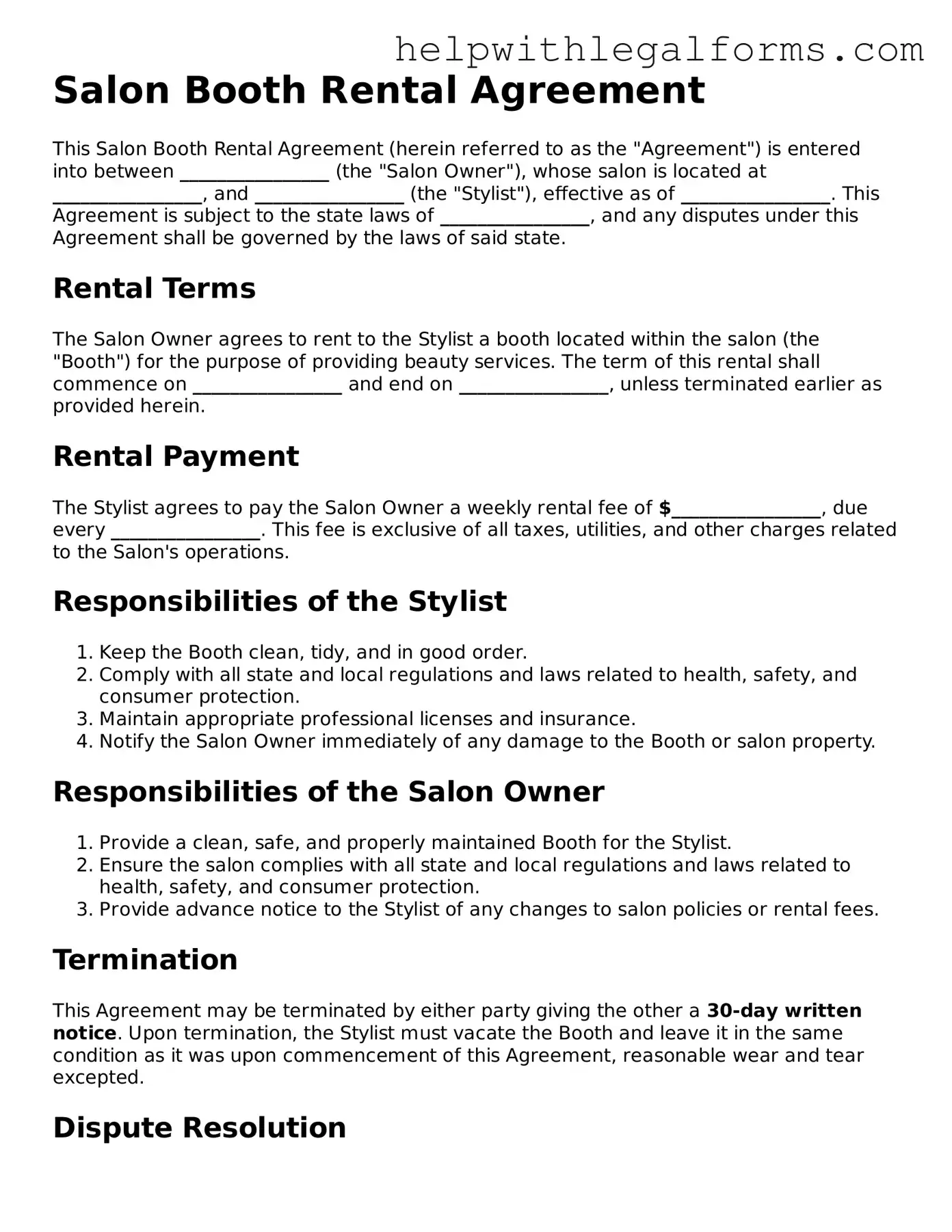Salon Booth Rental Agreement
This Salon Booth Rental Agreement (herein referred to as the "Agreement") is entered into between ________________ (the "Salon Owner"), whose salon is located at ________________, and ________________ (the "Stylist"), effective as of ________________. This Agreement is subject to the state laws of ________________, and any disputes under this Agreement shall be governed by the laws of said state.
Rental Terms
The Salon Owner agrees to rent to the Stylist a booth located within the salon (the "Booth") for the purpose of providing beauty services. The term of this rental shall commence on ________________ and end on ________________, unless terminated earlier as provided herein.
Rental Payment
The Stylist agrees to pay the Salon Owner a weekly rental fee of $________________, due every ________________. This fee is exclusive of all taxes, utilities, and other charges related to the Salon's operations.
Responsibilities of the Stylist
- Keep the Booth clean, tidy, and in good order.
- Comply with all state and local regulations and laws related to health, safety, and consumer protection.
- Maintain appropriate professional licenses and insurance.
- Notify the Salon Owner immediately of any damage to the Booth or salon property.
Responsibilities of the Salon Owner
- Provide a clean, safe, and properly maintained Booth for the Stylist.
- Ensure the salon complies with all state and local regulations and laws related to health, safety, and consumer protection.
- Provide advance notice to the Stylist of any changes to salon policies or rental fees.
Termination
This Agreement may be terminated by either party giving the other a 30-day written notice. Upon termination, the Stylist must vacate the Booth and leave it in the same condition as it was upon commencement of this Agreement, reasonable wear and tear excepted.
Dispute Resolution
In the event of a dispute arising under this Agreement, the parties agree to first attempt to resolve the dispute through good faith negotiation. If the dispute cannot be resolved through negotiation, the parties agree to submit to binding arbitration under the laws of the state of ________________.
Amendments
No amendment, change, or modification of this Agreement shall be valid unless in writing signed by both parties.
Signatures
This Agreement is executed in two copies, each of which shall be deemed an original.
Salon Owner Name: ________________
Salon Owner Signature: ________________ Date: ________________
Stylist Name: ________________
Stylist Signature: ________________ Date: ________________
